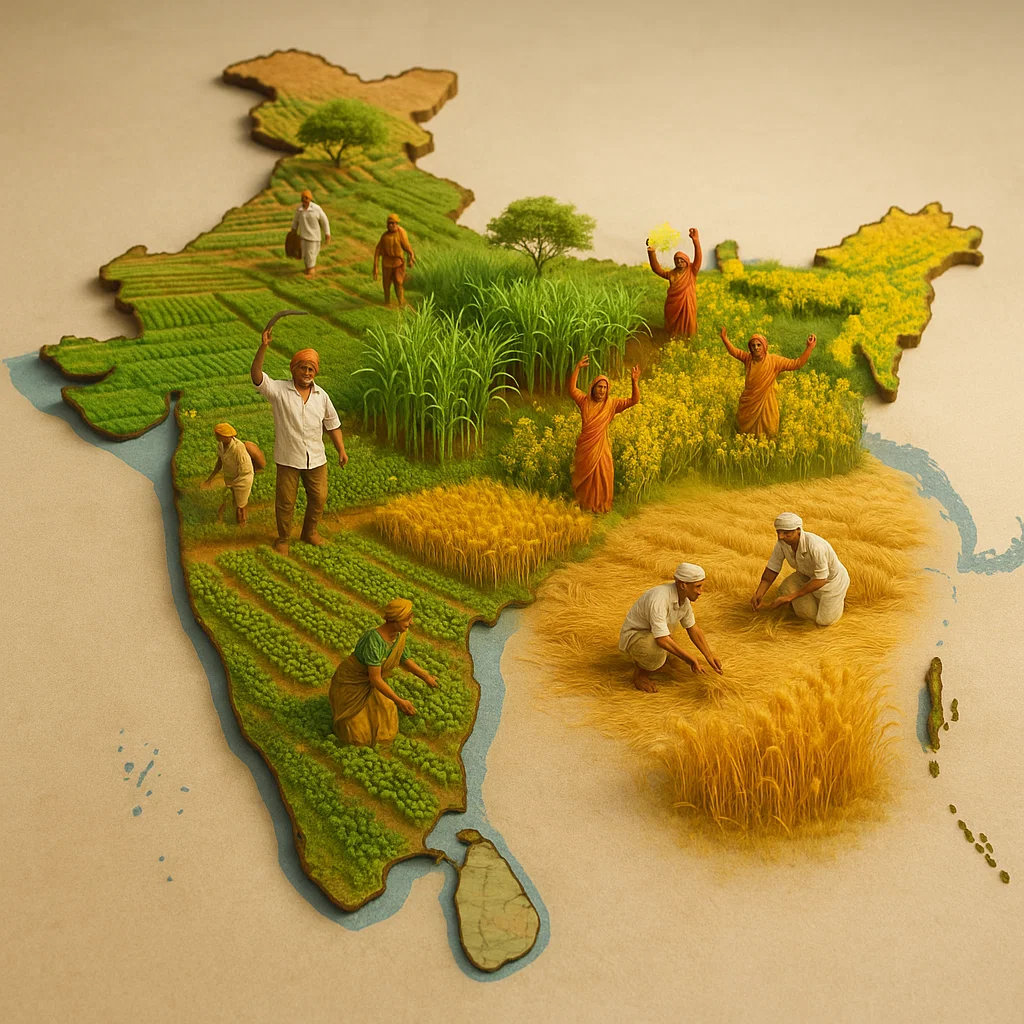WAG Demand
Farmers post/confirm demand in village WAGs (WhatsApp Groups) managed by GCCs.
Green Chakra is a community-owned network that connects farmers, GCCs (Green Chakra Champions) and BRC entrepreneurs through village WAGs (WhatsApp Groups). Farmers post demand in WAGs, GCCs consolidate it, and nearby BRCs supply locally produced bio-inputs packaged under a unified Green Chakra brand. The pilot runs largely manual, and is evolving into a digital platform for orders, inventory, and payments.
Locally made inputs reduce dependence on costly synthetics and keep value within the village.
GCCs and GCC Leads build viable last-mile enterprises and farm services.
BRCs follow packaging & labeling SOPs under one brand—improving quality and traceability.
Multiple BRCs can serve a cluster, creating a resilient, federated local marketplace.
Farmers post/confirm demand in village WAGs (WhatsApp Groups) managed by GCCs.
GCCs—and a GCC Lead per cluster—consolidate demand and match it to the nearest BRC(s) with stock.
Local BRC entrepreneurs produce bio-inputs and pack/label under the Green Chakra brand as per SOPs.
GCCs arrange delivery & farmer handover; quality and packaging checks are recorded.
On-ground PoD (photos/entries) and basic QC are logged at WAG level.
Pilot: Farmer → pays GCC → GCC pays BRC (net of commission). Next: App payment with auto revenue split across BRC, GCC, FPO hub, and Natural Capital.
The model aligns incentives end-to-end: local production stays viable, last-mile champions are rewarded, and coordination at the hub level is funded—while inputs remain affordable to farmers. In scaling, the app will auto-split payments to each stakeholder.
Farmers struggle to access reliable bio-inputs and native seeds, which affects productivity and soil health.
Organic and natural produce lacks a structured market, making it difficult for farmers to sell at fair prices.
Lack of dignified rural work pushes youth to move to cities in search of jobs, weakening local ecosystems.
Limited awareness and institutional support for natural farming practices slows adoption and scale.
By 2030, Green Chakra aims to build a nationwide, community-owned network that scales local production and last-mile access of bio-inputs & desi seeds—while enabling dignified rural livelihoods. These are the targets we are rallying behind:
2,000 BRC / GCC hubs
Operational across priority districts20,00,000+ farmer households
Adopting natural inputs via GCCs50,000 youth livelihoods
Entrepreneurship & farm services